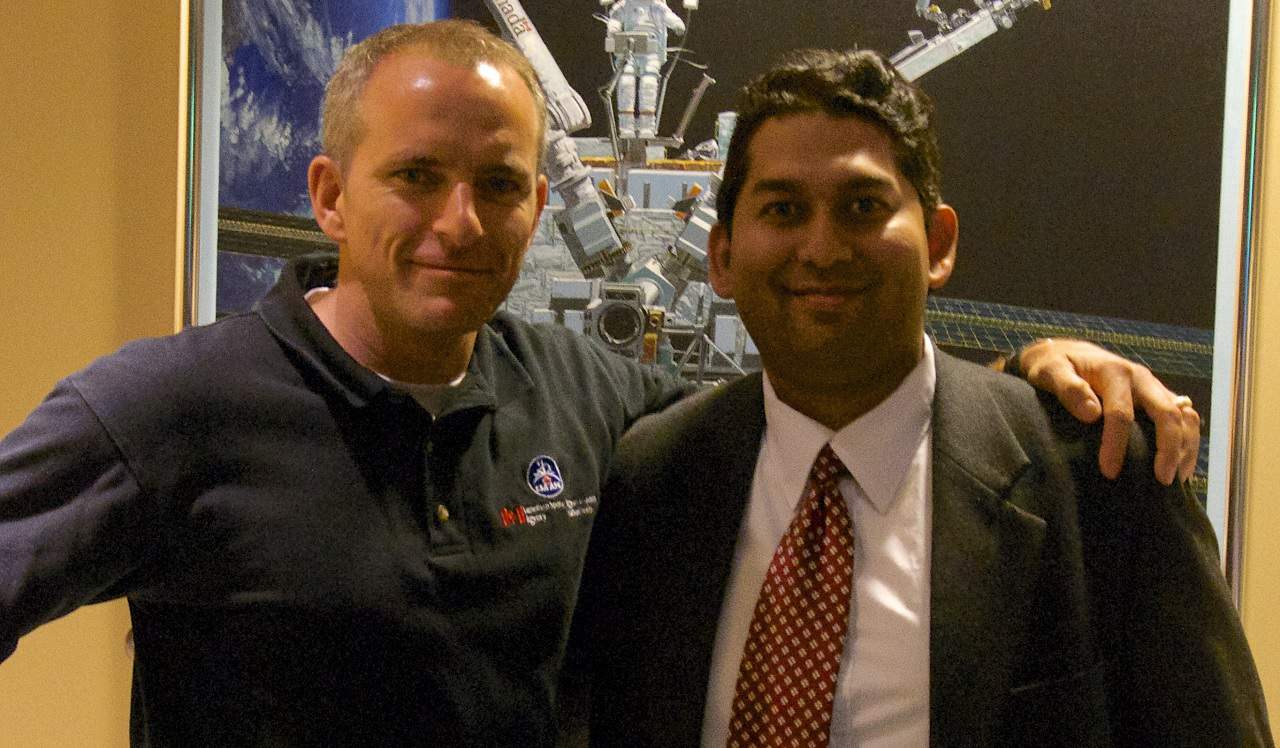Mississauga doctor authors paper showing space tech’s potential for pandemic management
Published November 3, 2021 at 7:54 pm

A public health and family physician in Mississauga is illustrating how space technology and the way space agencies provide care for astronauts in orbit can be applied to pandemics such as COVID-19.
Dr. Farhan M. Asrar is based in Mississauga and is an assistant professor at University of Toronto and physician research lead at the Trillium Health Partners Family Medicine Teaching Units. Recently, Asrar was the lead author of a research paper that examines how space agencies can support public health efforts. The paper, whose co-authors include Canadian astronauts David Saint-Jacques and Dave Williams, was recently published in the journal Nature Medicine.
Space agencies, of course, have been helping astronauts survive in extreme and isolated conditions for generations. Canadians can relate to isolation after after nearly 20 months of COVID-19. That said, Asrar says the supports that the space sector can provide to public health initiatives are just scratching the surface.
“The potential is quite significant, and it is also looking at it from different levels,” Asrar says. “One of the main purposes of our paper is creating greater awareness — that there is this rich source of expertise, experiences and technology which is available. Satellites, remote sensing data and various space spinoffs are something we can utilize in our practices.
“It’s been included to an extent, but it definitely has a greater potential. That is what we could advocate — that connection where public health experts have this option to help them make their decisions.”
Asrar collaborated with Saint-Jacques, Williams, and Dr. Jon Clark (former space shuttle crew surgeon for six space missions), Dr. Helena Chapman (associate program manager for health and air quality at NASA), Dr. Ross Upshur (Dalla Lana School of Public Health at the U of T) and Dr. Shirish Ravan (United Nations Office for Outer Space Affairs).
The research and writing process took about eight months. Asrar said that their topic surprised Nature Medicine’s editors to the extent that it published an editorial as a companion to the paper.
“They actually contacted me saying their whole editorial board was surprised,” Asrar said. “Even the health experts may not actually know what kind of a role space can play to assist here.
“The aspects that we looked at are the mitigation, the monitoring, as well as the preventative aspect,” added Asrar.
“It works at several levels. So if you look at general infectious diseases (as an example), there are several factors that we look at, such as population in a certain area. The other aspect that we look at is vector-borne diseases; certain diseases are spread through insects. Satellite technologies have actually been used to monitor migrations of, let’s say, these insects. When we use this technology to monitor vector habitats, patient population, weather and other parameters, it could thereby help predict the direction of any future outbreak and thus try to prevent it.”
‘Space spinoffs’
The authors also show how the National Aeronautics and Space Administration (NASA) has supported emergencies on Earth. For instance, NASA provided support in 2010 when 33 miners in Chile were rescued after being trapped underground for nearly 10 weeks. Additionally, satellite technology helped in vaccine distribution for polio, mapping the spread of ebola and assist with the relief efforts of humanitarian organizations.
“Space agencies have experience with self-isolation and lockdown measures,” Asrar said.
Another layer to the group’s research involves highlighting “space spinoffs.” Asrar and his fellow authors note that the Bio-Monitor, the Canadian Space Agency wearable tech that Saint-Jacques was the first to sport in space in 2019, could help monitoring health of COVID and long COVID patients and potentially also healthcare workers from a safe distance. It could also assist with monitoring patients who are isolated geographically or socially.
“This wearable technology offers around-the-clock monitoring of heart rate, breathing, blood pressure, temperature, electrocardiogram, physical activity and blood oxygen levels, which are valuable parameters to monitor in patients with active COVID-19 or long COVID,” they write. “Such devices could also be used to monitor the health of healthcare personnel, who are tirelessly working through the pandemic.”
Asrar is also a global faculty member with the International Space University, a France-based educational institution. He has led international space and health related projects that involved leading over 100 professionals from over 30 different countries. Above all, he is delighted to have rolled his medical practice and abiding passion for space exploration into creating a public good.
“I am trained in public health and family medicine, so my interests have aligned with public health medicine as a whole,” he said. “And I have that interest in space. So you combine the fields of medicine, public health and space medicine, and we look at what role could space play in pandemics.
“Understandably, with COVID-19, every field and profession has been stepping up to see how they can help.”
INsauga's Editorial Standards and Policies